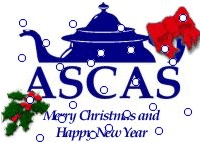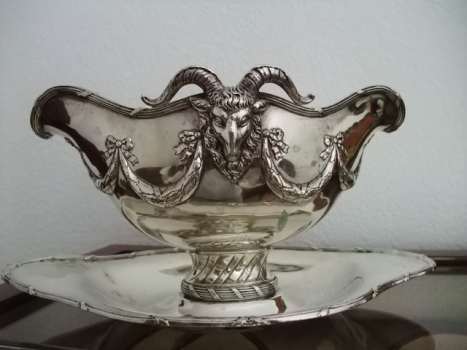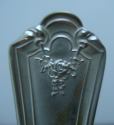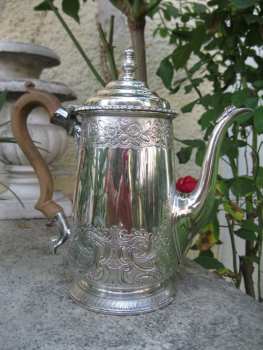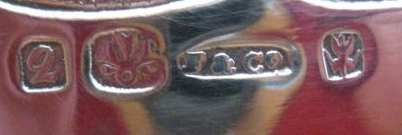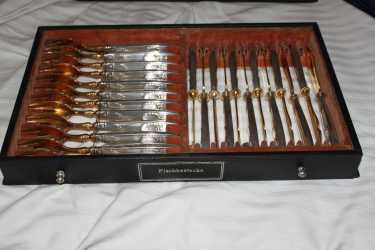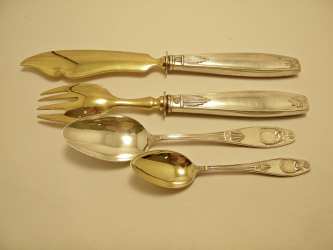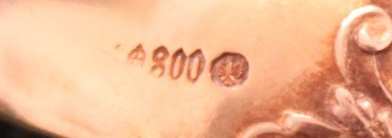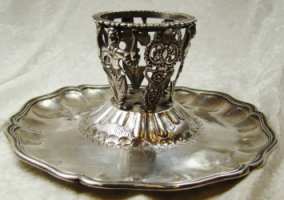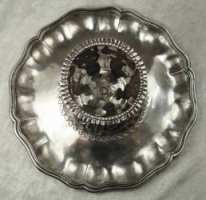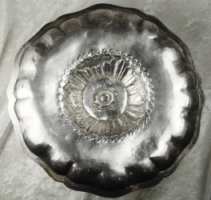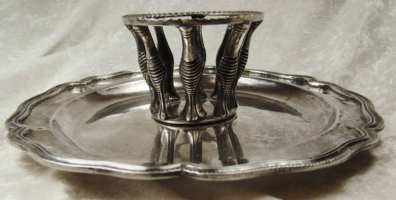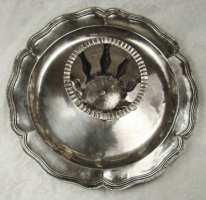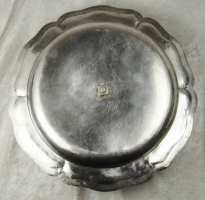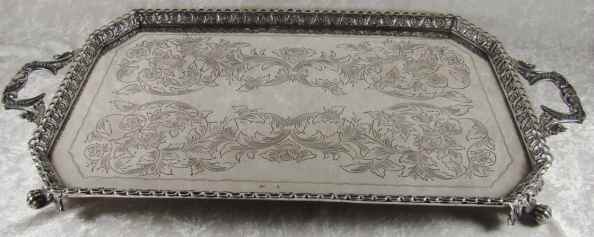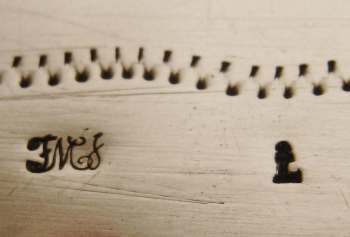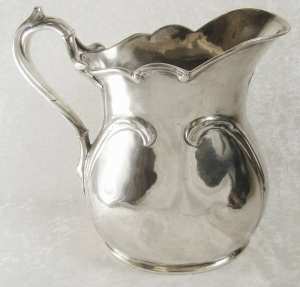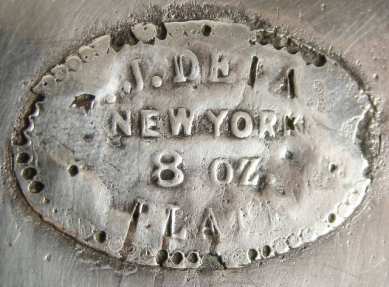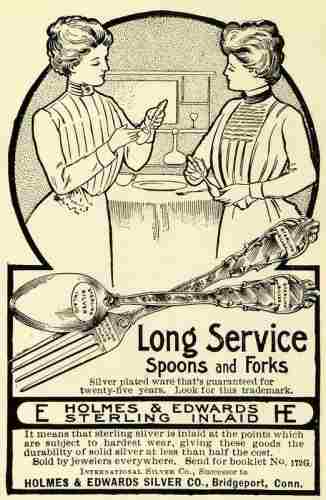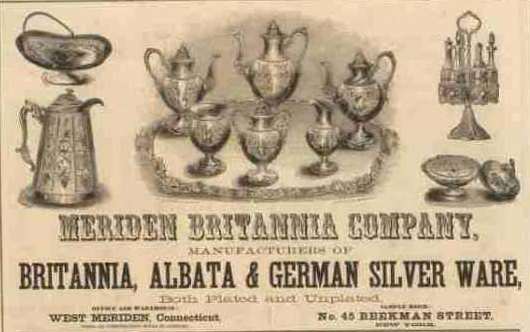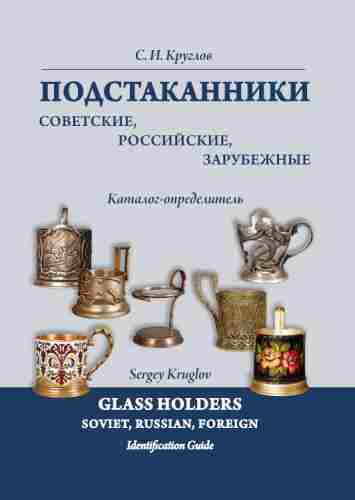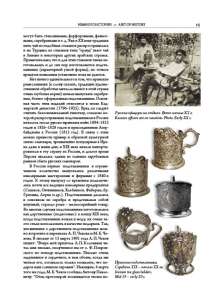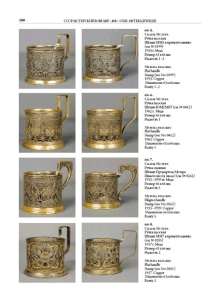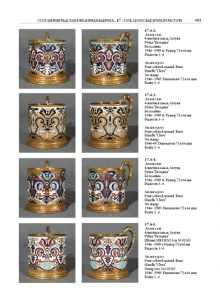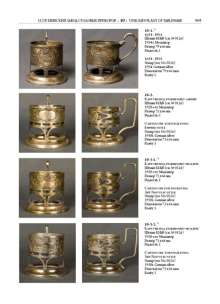 newsletter # 103 December 2012
newsletter # 103 December 2012www.ASCASonline.org SITE MAP
email: silverassociation@yahoo.it
YOUR GUIDE TO DECEMBER NEWSLETTER:
articles
new
members
members' window
|
2013 ASCAS membership
No fees are requested for ASCAS membership.
Members still interested to ASCAS and its activity are invited
to send an e-mail to
confirming their 2013 membership (the simplest way is to
use the 'reply' button on our December e-mail).
I apologize for this little effort asked to whomever appreciates
and supports ASCAS activity.
No action is required to unsubscribe. Members not confirming
their membership will be automatically deleted from the sending
of our monthly Newsletter and will be suspended on
February 2013.
Please accept my best wishes for a happy Christmas and a
prosperous New Year and my thanks for your present or past
appreciation of my work.
Giorgio Busetto
ASCAS Secretary
A new article for ASCAS website
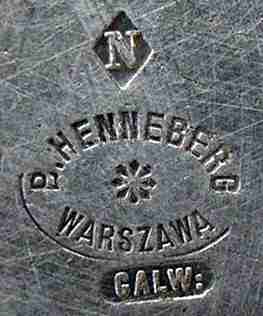
Dr. David N. Nikogosyan
presents:
|
New members
Welcome to new ASCAS members:
William Coultas - England UK
Janet Elliott - Australia
Lorri Genovese - USA
David Haynes - Australia
Michele Kaltsas - USA
James Lightfoot - USA
Ines Maria Marcelli - Italy
Renée Paine - USA
|
top page -
page map |
Members' Window # 103
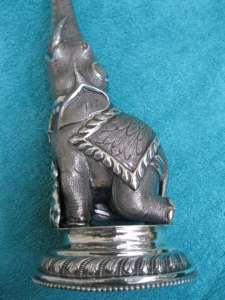
Alan Yates presents:
|
Mail to ASCAS: e-mail silverassociation@yahoo.it
Walter W. Snyder writes:
... I'm trying to find out when this sauceboat was made. I
believe it is French, but the hallmarks seem to be not very
clear. The A with a crown would indicate the "ancien regime",
but the A seems to be a fake. The other marks, a P with a crown,
a fleur de lys with a crown, a v in a circular hallmark, 88 with
a crown and the marks WK or KW seem to be a strange combination.
I have found no French silversmith with the initials KW or WK.
I have been told that the sauceboat is probably from the late
19th century and the hallmarks are not a normal combination. It
seems that they are forged to give the impression that the piece
is older.
Thank You,
Walter W. Snyder
Your item is an excellent example of "Hanau Silver" (Germany
late 19th – early 20th century) made by Wolf & Knell - Hanau (founded
1887). Information about Hanau Silver is available in ASCAS
website at
http://www.ascasonline.org/articolo13.html
Giorgio Busetto
Renata Camozzi writes:
... I have no idea of what is this flatware piece. It bears
William Rogers mark.
Can ASCAS readers give suggestions about its use?
Thanks.
Renata Camozzi
***ANSWER PUBLISHED IN JANUARY 2013 NEWSLETTER***
Alan Yates writes:
... I'm trying to identify the origin and any other possible
information about this silver coffee pot. I have researched in
many sources but all to no avail.
The item is a good quality silver coffee pot with hardwood
handle, clearly modelled on the standard English Georgian shape.
It is a good weight (35 oz.), 24 cm high. From appearances only,
my guess is Colonial, c. 20th century. But from where? The marks
are small but clear.
Thanks for any suggestion you can supply.
Alan Yates
George L. Lee, III writes:
... I wish to identify the marks on a set of flatware I was
given as a wedding present in the early 1990's by my mother.
This is the remaining silverware from the set I had for many
years, but it was pilfered last summer with most of their pieces
taken.
There are 3 hall marks, 2 of which can be seen somewhat clearly.
I hope to obtain information about its maker, pattern and period
of manufacture.
Thanks for your help.
George L. Lee, III
The mark looks that of Bruckmann & Sohne (see at
http://www.silvercollection.it/germansilverhallmark22.html
I trust in ASCAS members with a better knowledge of German
silver for further information.
Giorgio Busetto
***ANOTHER ANSWER PUBLISHED IN JANUARY 2013 NEWSLETTER***
Debbie Rindge writes:
... I'm searching information about some silver items I own:
Two sterling silver plates with a receptacle holder (?) bolted
to the center of each.
Both are unmarked but tested as sterling. I was told they have
been in a family for several generations.
At first I thought they were Spanish Colonial, but we've found
nothing like them, and they are heavier than other Spanish
Colonial plates I have.
The plate with mermaids alternating with a vertical design at
center is 8.5" diameter and 3.75" high.
The plate with flared ribbed posts at center is 8.25" diameter x
2.5" high.
***ANSWER PUBLISHED IN JANUARY 2013 NEWSLETTER***
An 800 silver tray (footed, 2-handled) 23 x 12”. It has a
mark that looks like early 19th century Lisbon (the "L" topped
by a crown), and a 3-letter mark that begins with "FM".
Can anyone identify the silversmith and confirm Lisbon with an
approximate date?
***ANSWER PUBLISHED IN JANUARY 2013 NEWSLETTER***
I have researched the mark on this silverplated pitcher but
haven’t found anything. It's 8" high x 7.75" wide x 3-5/8" deep.
Not all areas of the mark are legible, but this is what I can
read:
_. J. DE_AN
NEW YORK
8 OZ.
PLATE
NEW YORK
8 OZ.
PLATE
Thanks for your help
Debbie Rindge
David Dishart writes:
... I would greatly appreciate if you could take a look at the
enclosed hallmark. I would like to know if it means real silver
or silverplate.
"Plata" might mean plate, but the anchor looks exactly like the
British silver stamp? I have been unable to find what country
the horse is form.
Thanks
David Dishart
***ANSWER PUBLISHED IN JANUARY 2013 NEWSLETTER***
Wayne Holmes writes:
... please could you tell me what the hallmarks mean on the
silver spoon I found under some old floor boards in an old
house?
Thanks
Wayne Holmes
It's a silverplate mark of William Page & Co (see at
http://www.silvercollection.it/electroplatesilverNOPtre.html
Giorgio Busetto
"A PAGE per MONTH"
In this column we presents a page obtained from makers'
brochures, books, auction catalogs, advertising or whatever
other printed paper, related to silver, that may be of interest
for ASCAS members.
The images will be published at a "low resolution" level and for
private and personal use only
"A WORD per MONTH"
In this column we
present an abstract from a page of the "What is? Silver
Dictionary"
courtesy of


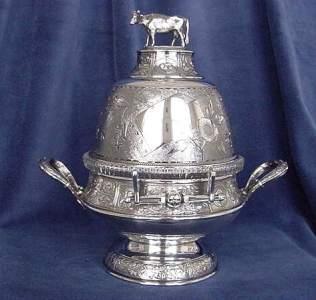
|
BUTTER DISH
|
"A SILVERSMITH per MONTH"
In this column
we present marks, information and history of silversmiths and
silver manufacturers.
This column is published under the kind permission of Giorgio
Busetto's website

|
"A BOOK ON MY SHELF"
In this column we present books, new
or ancient, dealing with silver in all its aspects (history,
marks, oddities...). This isn't a "book review" but only a fair
presentation of some useful "tools" that anyone may have in the
shelf of his bookcase.
ASCAS members are invited to contribute to this column
(click to enlarge images)
In the "book on my shelf" of this month Dr. David N. Nikogosyan presents:

Custom Search
Closing our December 2012 edition of ASCAS Newsletter I hope you have appreciated its content.
Your comments, suggestions and advice will be of great help.
My thanks to Renata Camozzi, David Dishart, Wayne Holmes, George L. Lee III, Dr. David N. Nikogosyan, Debbie Rindge, Walter W. Snyder and Alan Yates for their invaluable contributions.
Giorgio Busetto
Secretary
ASCAS is a community of people having a common
interest in antique silver.
|
